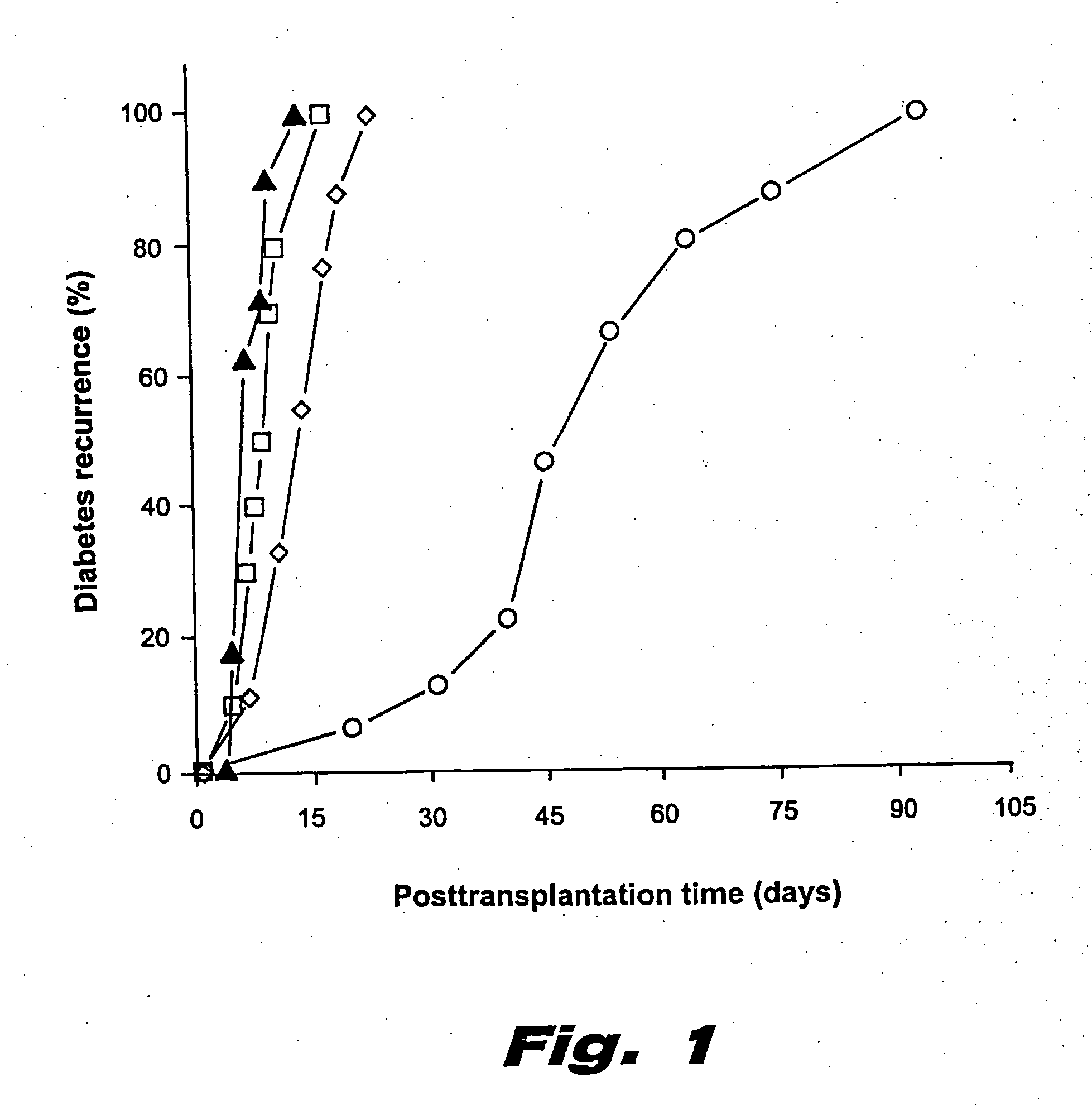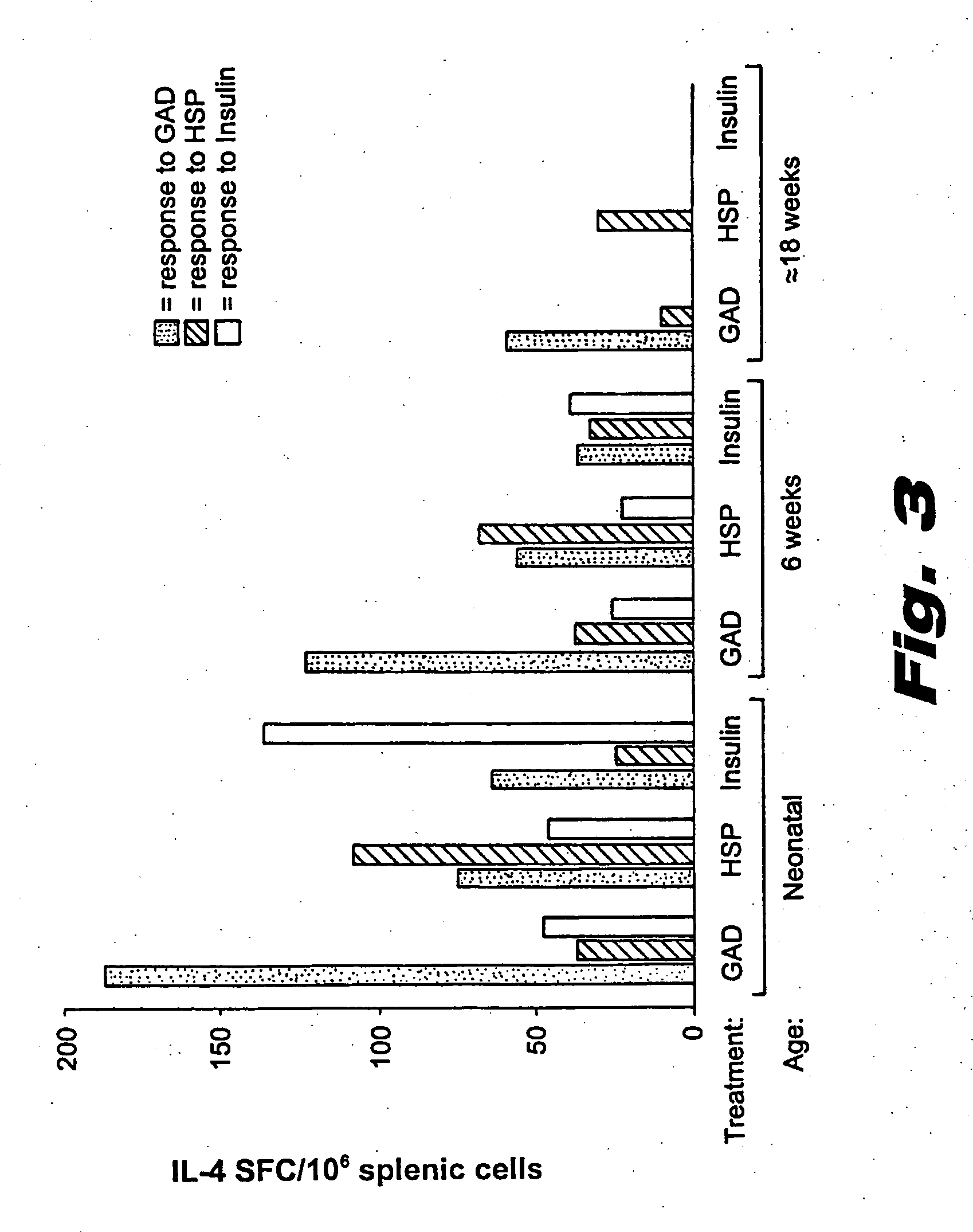Use of neglected target tissue antigens in modulation of immune responses
a target tissue and antigen technology, applied in immunological disorders, antibody medical ingredients, metabolism disorders, etc., can solve the problems of difficult selective deletion or inactivation of t-cells, difficult to apply strategies to genetically diverse human patient populations, and broad interference with immune system function, so as to achieve high immunotherapeutic agents, effective treatment, and effective regulating undesirable immune responses
- Summary
- Abstract
- Description
- Claims
- Application Information
AI Technical Summary
Benefits of technology
Problems solved by technology
Method used
Image
Examples
example 1
A Th1 Amplificatory Cascade is Associated with Disease Progression
[0173] The involvement of Th1 and Th2 cells in both the spontaneous autoimmune process and in tolerance states has been difficult to address in non-transgenic mice primarily because of the very low frequency of autoreactive T cells within the T cell pool. Using an ELISPOT assay capable of characterizing T cells at the single cell level (Forsthuber et al, supra, 1996), we examined the natural development of B cell autoimmunity in NOD mice. When unmanipulated NOD mice were tested at the onset of insulitis (4 weeks of age), we detected vigorous IFNγ, but no IL-4 or IL-5 specific T cell responses to a single determinant of GAD (GAD p35) consistent with a unipolar Th1 response (2, 17). By 12 weeks of age, T cell autoimmunity had spread intramolecularly to additional GAD determinants and intermolecularly to insulin B-chain and HSP; all of these secondary autoimmune process are characterized by the spreading of unipolar Th1...
example 2
Autoantigens Differ in Their Ability to Protect Transplanted Syngeneic Islets Grant in Diabetic NOD Mice
[0174] Based on the ability of autoantigen treatment to inhibit disease in pre-diabetic NOD mice with (1) we tested whether this treatment could also protect transplanted syngeneic β cells from the established autoimmune responses in diabetic NOD mice. Islets were transplanted into diabetic NOD mice that had been treated with β-galactosidase. Administering GAD / IFA intraperitoneally to recipient diabetic NOD mice prior to transplantation greatly extended syngeneic islet graft survival. While HSP peptide (HSPp277) treatment conferred a non-significant trend toward protection, insulin B-chain treatment lacked any protective effect. The results are shown in FIG. 1, wherein data are presented as time post-transplantation at which hyperglycemia recurred. These findings correlate with the extent to which each autoantigen was able to promote Th2 immunity in newly hyperglycemic animals (s...
example 3
Attenuation of Inducible Th2 Immunity with Disease Progression
[0175] Splenic T cells from NOD mice which had been treated at birth, 6 weeks in age, or at the onset of hyperglycemia (=118 weeks in age) with control foreign antigens or βCAAs were isolated and the frequency of T cells secreting IL-4 in response to the injected antigen was determined by ELISPOT. The data are represented as the mean number of IL-4 secreting spot forming colonies (SFC) per million splenic T cells. A similar pattern was observed for IL-5 secreting antigen-reactive T cells. The results are shown in FIG. 2.
[0176] Splenic T cells from mice treated at different stages of the disease process with control antigens or βCAAs were tested for antigen induced IL-4 and IL-5 T cell responses by ELISPOT. The data are represented as the mean number of IL-4 secreting SFC per million splenic T cells. The results are shown in FIG. 3. A similar pattern was observed for IL-5 secreting antigen-reactive T cells. In each case,...
PUM
| Property | Measurement | Unit |
|---|---|---|
| particle size | aaaaa | aaaaa |
| particle size | aaaaa | aaaaa |
| particle size | aaaaa | aaaaa |
Abstract
Description
Claims
Application Information
 Login to View More
Login to View More - R&D
- Intellectual Property
- Life Sciences
- Materials
- Tech Scout
- Unparalleled Data Quality
- Higher Quality Content
- 60% Fewer Hallucinations
Browse by: Latest US Patents, China's latest patents, Technical Efficacy Thesaurus, Application Domain, Technology Topic, Popular Technical Reports.
© 2025 PatSnap. All rights reserved.Legal|Privacy policy|Modern Slavery Act Transparency Statement|Sitemap|About US| Contact US: help@patsnap.com



